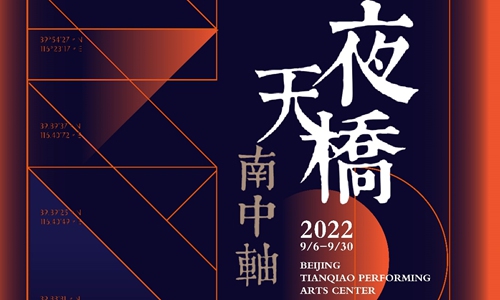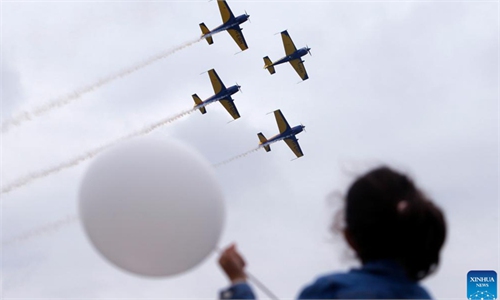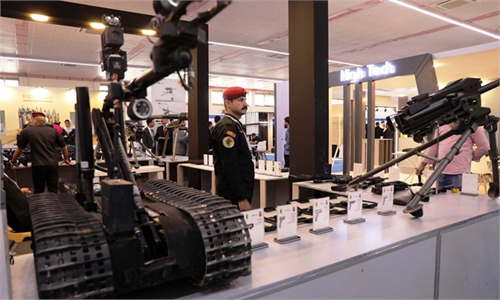
From indoor exhibitions to outdoor concerts and night cycling along the south Central Axis, a total of five series of activities, held jointly by many Beijing institutions, are introduced so that urban residents can enjoy themselves during September 6 and 30, 2022, in Beijing.PhotoL Courtesy of Beijing Tianqiao Performing Arts Center
A series of activities will be introduced around the south Central Axis Area in Beijing during the evenings starting from Tuesday to promote the city's night economy, and make the Central Axis of Beijing to become a UNESCO World Heritage Site.
From indoor exhibitions to outdoor concerts and night cycling along the south Central Axis, a total of five series of activities, held jointly by many Beijing institutions, will be introduced so that urban residents can enjoy themselves during the early autumn in Beijing.
One of the most important landmarks in Beijing, the south Central Axis stretches 11 kilometers from Qianmen (located in the southern part of Tiananmen) to the Fengtai District in the city's far south. People can enjoy open air Peking Opera performances, art exhibitions and "night economy" forums, while strolling through the night market fair or cycling alongside the road.
Inviting various performance groups, musical production companies, stand-up comedy companies and many other institutions, diverse performances such as improvisation and masquerade parties will be held along the south Central Axis.
Exhibitions account for a majority of the activities people can enjoy. Visitors will be able to explore the memories of the capital through these exhibits of artworks.
At the same time, traditional culture will be presented through contemporary art as artists explore the relationship between tradition and modernity.
The Beijing Tianqiao Performing Arts Center is the main organizer of these activities. The center is located near Tianqiao Street, an area of the city with strong ties to Beijing folk customs. Here, city residents can enjoy the night view as well as acrobat performances, local snacks and other folk culture.
Night markets, which are arranged with east and west markets just as ancient tradition, will recreate the entertainment activities that have a long history of the city.
Dozens of new and historical brands are taking part in the events. The east market will be a heaven for tourists who enjoy teahouses, taverns, old bookstores and theaters. Meanwhile, the west market will contain items popular among Gen Z such as China chic clothing, video games, and accessories as well.
The night cycling route will pass theaters, bookshops, cinemas, cafes and restaurants alongside the south Central Axis so that riders can see how the city has developed while they exercise.
In addition, experts and scholars will also join the forums focusing on the discussion of night economy and how it activates the vitality of a city.
The Central Axis of Beijing, one of the most important representatives of Chinese civilization, refers to the core area of the ancient capital city that stretches 7.8 kilometers from the Yongding Gate in the south to the Bell Tower and Drum Tower in the north part of Beijing city.
As part of the Central Axis that is moving forward to become a UNESCO World Heritage Site, the south Central Axis runs from Qianmen to Yongdingmen, and further south from Yongdingmen to Sanyingmen in the Fengtai district.
Over the past few years, the south Central Axis has been transformed from a wholesale market to refreshing leisure area full of trees, lakes and flowers.
From 2017 to 2020, 16 parks along the South Central Axis were built in Beijing's Fengtai District, adding more than 570,000 square meters of new green areas.
Global Times


